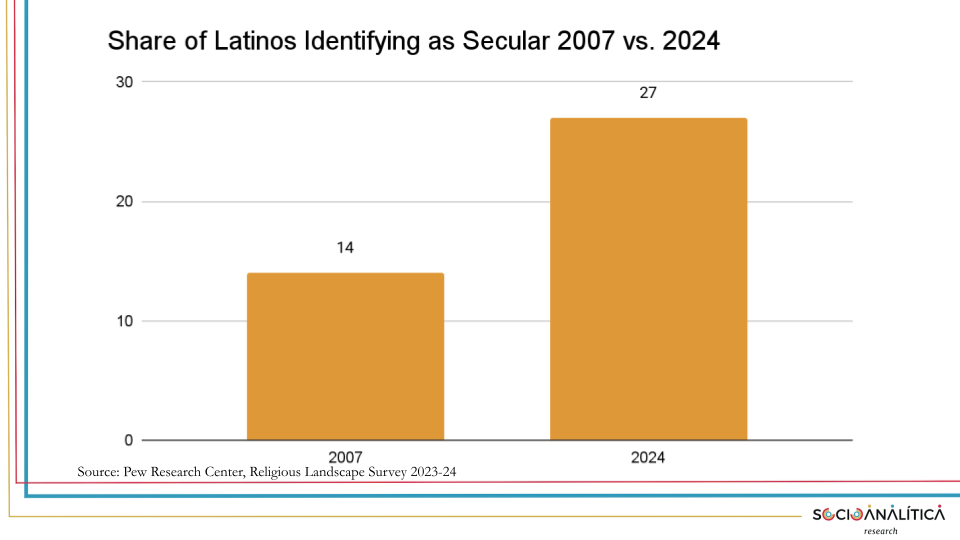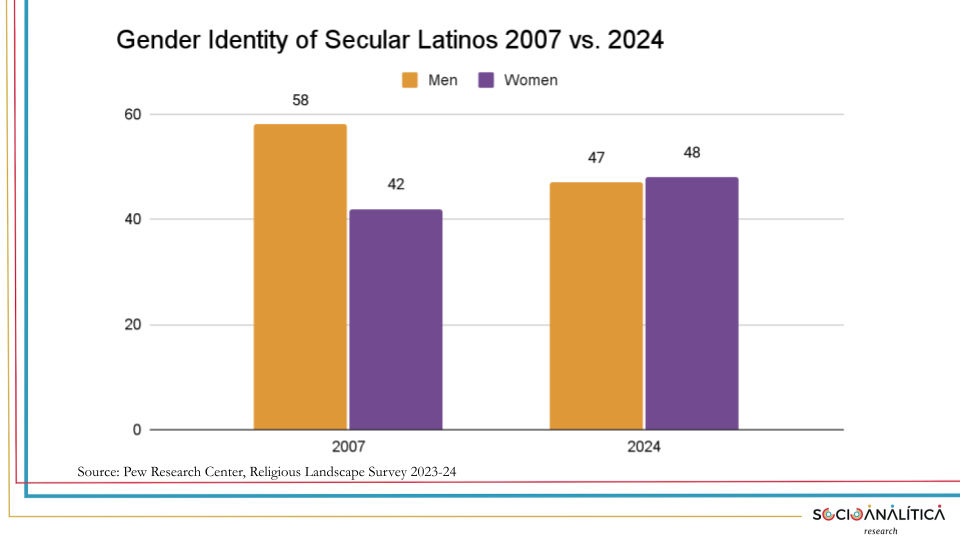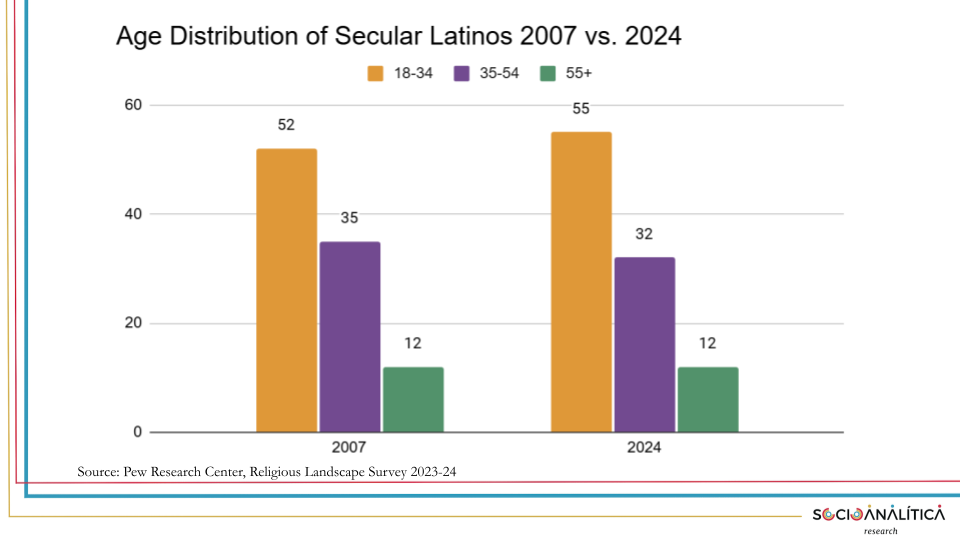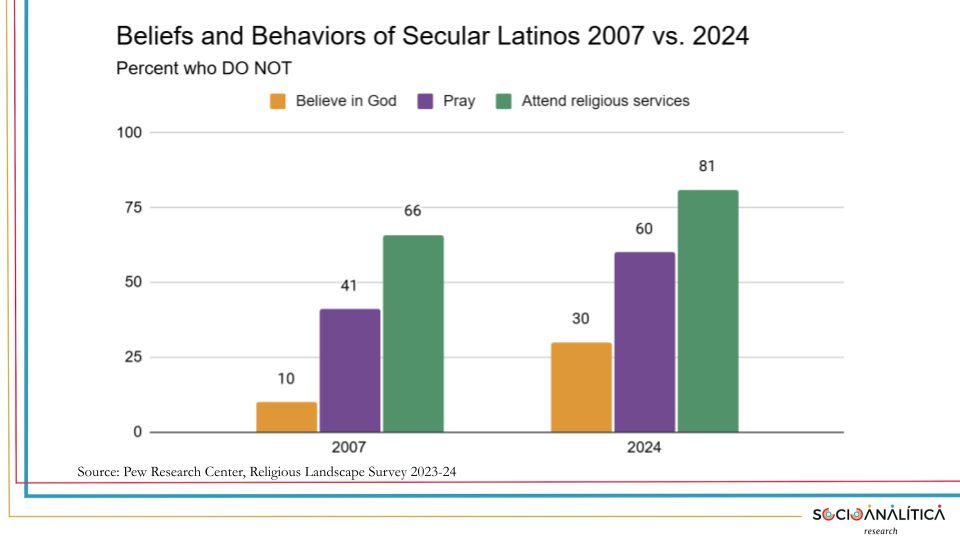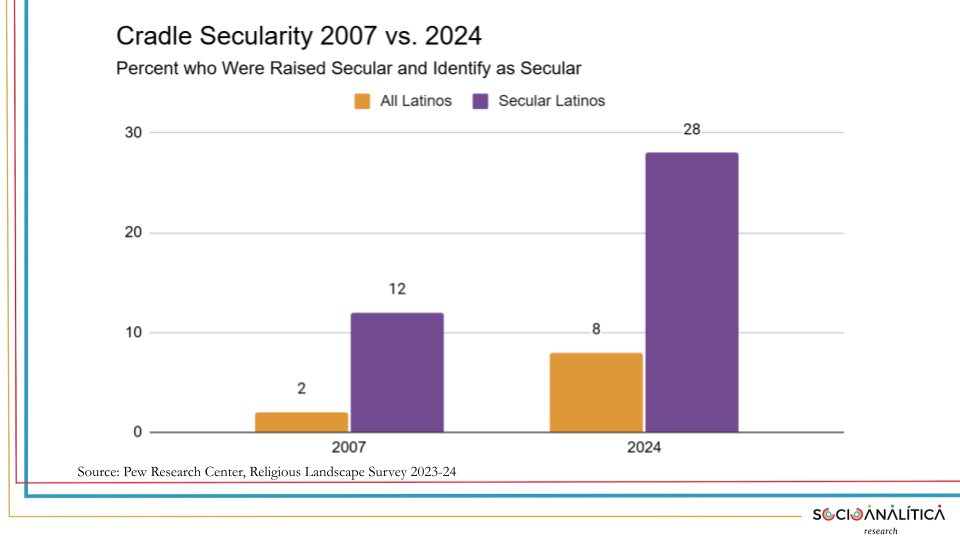Latino Secularity Then and Now
Oct 08, 2025 1:16 pm
For the past few weeks, we’ve been focusing on Latinos who identify as secular or non-religious. This post focuses on five changes in the secular Latino population between 2007 and 2024, the time between the first Pew Landscape Survey and the latest one.
Growth of the Secular Latino Population
In 2024, 27% of Latinos identify as secular, up from 14% in 2007. This represents a 93% increase, nearly doubling the proportion of secular Latinos. It’s important to note that this growth is somewhat misleading due to the overall increase in the Latino population. Approximately half of the growth from 2007 to 2024 can be attributed to non-religious Latinos, who now number around 13 million, compared to 4 million in 2007. By comparison, the adult Latino population grew from 30 million in 2007 to 48 million in 2024.
Gender Parity
The secular Latino population is not only larger but also more diverse in terms of gender identity. In 2007, nearly six in ten (60%) of secular Latinos identified as men, while only 42% identified as women. This has shifted significantly: as of 2024, 47% of secular Latinos are men, 48% are women. This shift suggests that women have played a substantial role in the continued growth of Latino secularity.
Youth Movement
The secular Latino population remains predominantly young. In 2007, 52% of secular Latinos were under the age of 35, and this figure increased to 55% in 2024. Only about 12% of secular Latinos were over 55 in both years. This indicates not only room for growth but also suggests that younger individuals are continuously leaving religious affiliations.
Decreasing Religious Beliefs and Behaviors
Secular Latinos are less likely to engage in behaviors and beliefs traditionally associated with religion. In 2007, only 10% of secular Latinos reported not believing in God; by 2024, this had tripled to 30%. Additionally, the proportion of those who seldom or never pray has increased from 41% to 60%, and those who do not attend religious services have grown significantly, from 66% in 2007 to 81% today.
Increasing Cradle Secularity
More Latinos are being raised secular. In 2007, just 2% of all Latinos were raised secular and identified as such by the time of the survey. Now, nearly 10% of Latinos overall say they have been raised secular, with almost 30% of secular Latinos having been raised non-religious. This marks a sixfold increase in the number of Latinos who are raised secular and remain so.
The New Secular Boom? Religion, Politics, and the Backfire Effect
Next week, I will be giving a webinar based partly on my pieces discussing the views of
October 15, 2025 at 7:00 PM Eastern Time
The IRS recently confirmed it will not investigate preachers who endorse political candidates from the pulpit—a major development in the Christian Right’s push to dismantle the wall between church and state. While intended to strengthen Christianity’s influence, this move may accelerate the very trend they hope to reverse: the steady growth of secularism in America. Today, roughly 30% of Americans are non-religious, many of them former Christians, and most oppose political preaching. Surveys from Pew and PRRI show overwhelming public disapproval of churches endorsing candidates, especially among the non-religious. Dr. Juhem Navarro-Rivera will explore how these political overreaches could spark renewed secular activism and even a new wave of religious disaffiliation. Join us for a data-driven look at the backfire effect that may shape the future of religion and politics in the United States.
